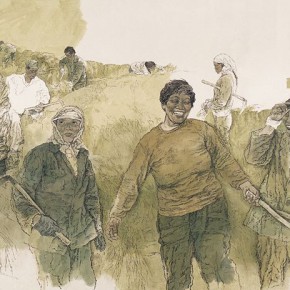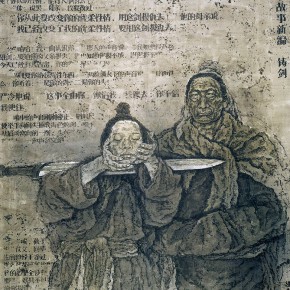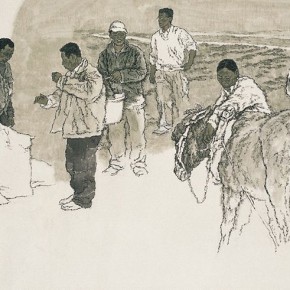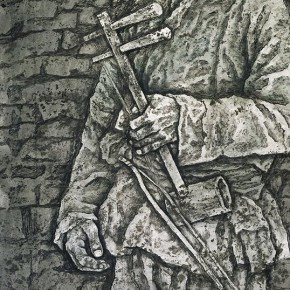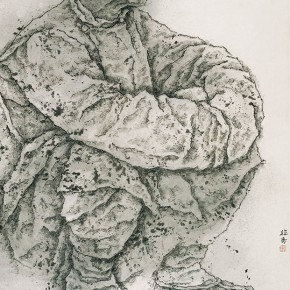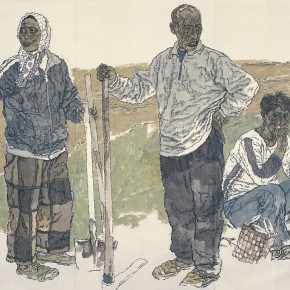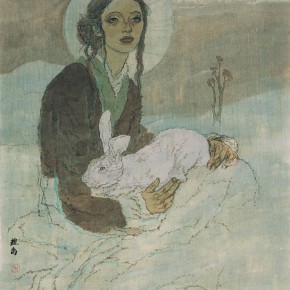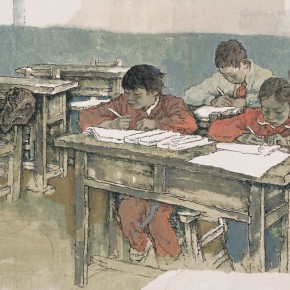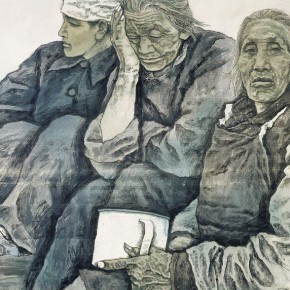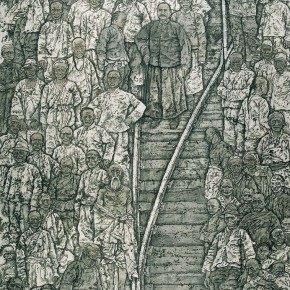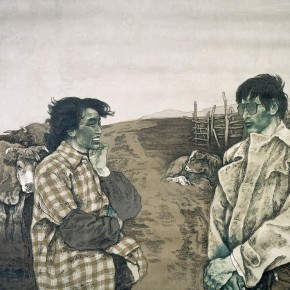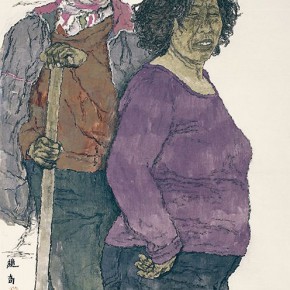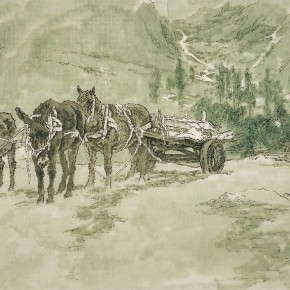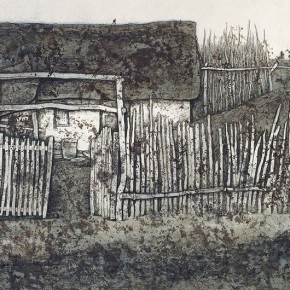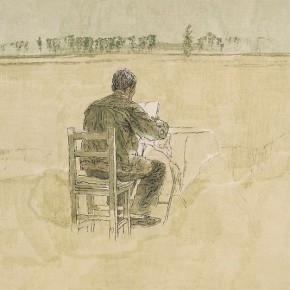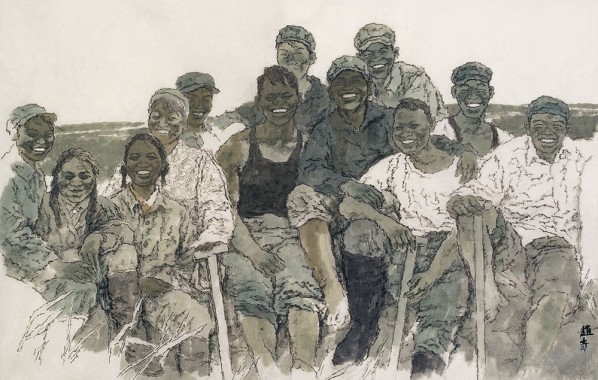
“What a Land - Zhao Qi Art Exhibition” is presented at the National Art Museum of China on March 5, going through to March 13, 2014, it exhibits the works covering his creations in the 1980s through to his recent works created early this year. It is a large scale solo exhibition, and is presented at a total of 5 halls including hall 1, 6, 7, 8, 9, along with individual themes: Hall 1 is themed on history, focusing on Opium Wars and Anti-Japanese War; Hall 7 and 9 are themed on land and labor; Hall 8 is themed on the memory of the special era of “educated youth”; Hall 6 features the prairie in the mind of the artist.
Viewing throughout the works by Zhao Qi, we can feel his love for land, his respect for the living life on the land in China. The painter is employed in the form of “sketch”, which can’t be understood as the illustration of the folk interest, for his work is filled with a sophisticated and profound thinking on life.
Zhao Qi is unique in the construction of painting language, he said, “I love field discourse, like to express myself like colloquialism.” He is pursuit of a kind of simple, natural, verbal statement, which is a shock and breakthrough to the ancient aesthetic consciousness of Chinese painting, which is built on the basis of the classical Chinese over the past thousands of years. “I believe that painting depends on the feeling, rather than theory,” “It is impossible to finish a painting by a conceptual interpretation.”
Introduction to the Creating Process of the Artist
His works won more than 20 national fine art awards starting from he made a name himself for the work “Lovely China” included in the 6th National Art Exhibition in the 1980s, to the work “Father’s Huqin” on the 9th National Art Exhibition. In 1996, he was awarded the only “Centurial Star” of the national art circles by the Centurial Star program committee of the China Federation of Literary and Art Circles. In this period, the comics “Lovely China”, “Ah, The Great Wall” and “Eternal Jingyu”, where Zhao Qi focused on the combination of text and painting, it actually objected to focus on plot and story observed by the traditional comic, from a broader perspective, applying a poetic and musical language to write a poetry and paint, highlighting the lyricism and symbolic, so that the work presented a kind of brand-new contemporary feeling. Chinese painting “Reunion” was created in 1989, talking about a story of a couple of separated “educational youths”, the man returned the old place after his leaving for years, to see the “old friend” who still labored on the countryside. It reveals a sincere love, someone reviewed that the work “was equal to the connotation of a novel”. “Living People - 1885·San Francisco · Huang Zunxian and Chinese Labors” was even generally praised at that time. When it attended the exhibition, some predecessors such as Wang Chaowen, Wang Qi directly said: “It is as good as “The Refugees Figure” by Jiang Zhaohe”.
Entering 2000, although Zhao insisted on his own attitude towards art, his work is different with the previous ones, mainly reflecting on creating lots of series of works, by repeatedly changing perspectives on the same theme, such as “Horse, Please Walk Slowly”, which is a very contradictory and complex topic: on the one hand, people are reluctant to leave their home, on the other hand, people are constantly wandering, leaving their home. Painting language was played extremely in the “Crowd” series, where not any narrative plot is seen, time is just tjhe background. The men of the paintings are like bricks and soil, they are our fathers, they are the perennial us.
Zhao Qi focuses on the creation of Land series in recent years, and on the similar screens, artist is thinking some more essential things of life: What are we? Why do we need to work? What can we change? Do we repeat it?
Courtesy of the artist and the National Art Museum of China, translated by Chen Peihua and edited by Sue/CAFA ART INFO.


